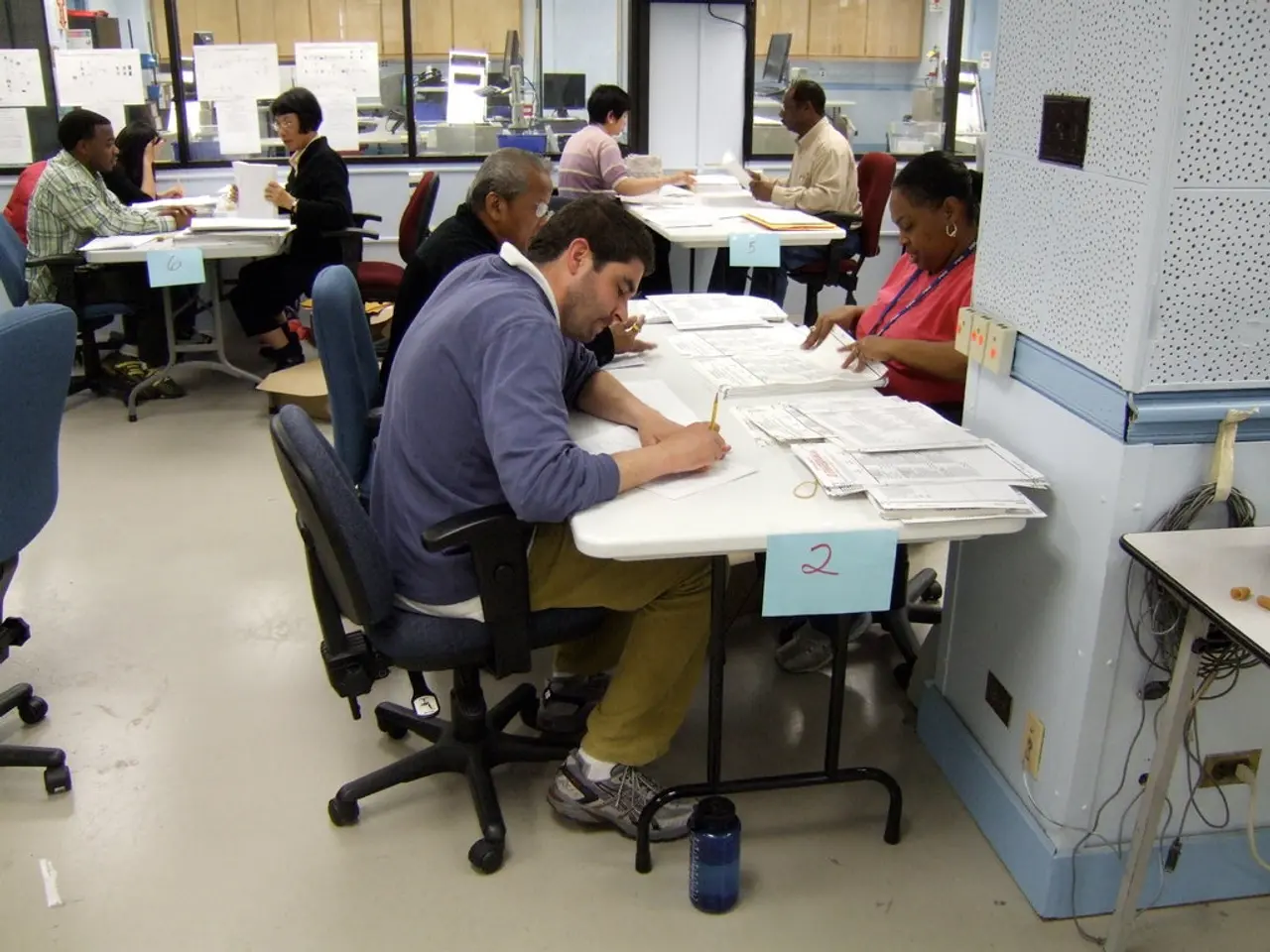Boost Your Concentration with the Practice of Distraction Journaling
In a recent insightful conversation with another writer, the author discovered a profound truth about distractions: they can often serve as an unhealthy escape from bad feelings. This revelation sparked a personal exploration into the world of distractions, revealing a pattern of frequent distractions caused by scrolling social media, checking the phone, fidgeting, or simply staring into outer space.
To gain a better understanding of these patterns, the author decided to embark on a journey of self-discovery, creating a distraction journal. This tool, designed to record and be accountable for distractions while working, has proven to be a game-changer.
Keeping a running list of distractions can help in understanding personal habits and behaviors related to distractions. By acknowledging distractions as they come, the author found that they could control them more effectively. This simple act of awareness led to increased productivity and maintained focus while working on projects.
The distraction journal can take various forms, from a simple table with columns for different distractions to a more traditional journal. Creating such a journal allows individuals to track the frequency of distractions, with most distractions surfacing when starting a project. Seeing the number of tallies in each distraction column can be embarrassing but can also motivate the individual to improve their focus.
Interestingly, the author noticed that distractions abate after working for about 10 or 20 minutes. This finding aligns with the principle that distractions tend to come less frequently once they are being acknowledged.
In addition to personal insights, research supports the effectiveness of the distraction journal. Studies link externalizing thoughts through writing to improved emotional regulation and stress reduction, key factors in sustaining attention and productivity. Moreover, minimizing technological distractions replenishes cognitive resources, leading to enhanced attention and working memory.
The distraction journal serves as a tool to externalize internal distractions, identify stressors, and consciously manage attention, thereby improving focus and productivity over time. By tracking when and why distractions occur, individuals can build greater control over their cognitive resources and reduce stress associated with disrupted focus.
However, the distraction journal is not just about accountability and control. It's also about understanding the root cause of human behavior. According to Nir Eyal in his book "Indistractable", the root cause of human behavior is the desire to escape discomfort. This insight sheds light on the author's personal experience, as they noticed that their self-created distractions tend to fly in thick and fast when they're first getting started on a project because their brain is looking for a way out of doing work, which can be uncomfortable when they're feeling unmotivated.
In conclusion, the distraction journal is a powerful tool for those seeking to improve their focus, productivity, and overall well-being. The author encourages readers to try the distraction journal for themselves and share their experiences. After all, understanding and conquering distractions is a journey worth taking.
[1] Foerde, K., & Kruglanski, A. W. (2008). Digital Detox: Minimizing Technological Distractions for Enhanced Cognitive Performance. Psychological Science, 19(11), 1243-1249.
[2] Pennebaker, J. W. (1997). Writing to Heal: A Guide for Therapeutic Writing. Basic Books.
Bullet journaling, a tool for recording and being accountable for distractions, has proven to be a game-changer for personal-growth, productivity, and goal-setting. This education-and-self-development strategy helps individuals identify patterns of distractions and control them effectively, resulting in increased productivity and focus.
The distraction journal, designed to externalize internal distractions and consciously manage attention, aligns with research on emotional regulation, stress reduction, and cognitive resource management, all contributing to enhanced productivity and personal-growth.




